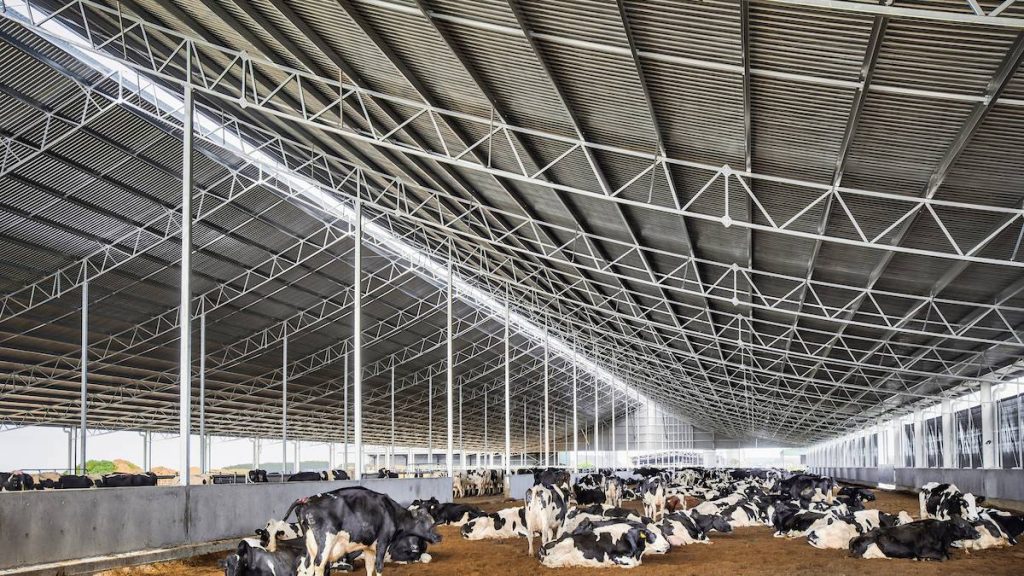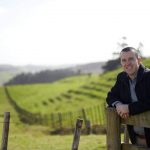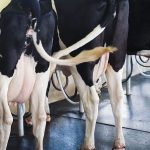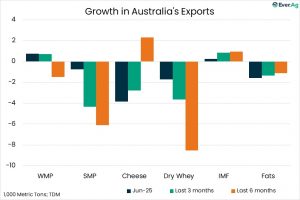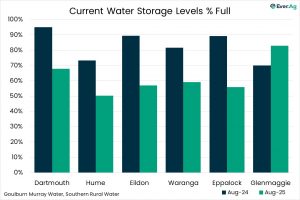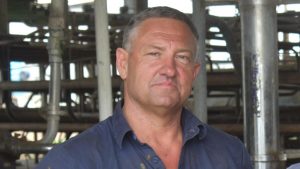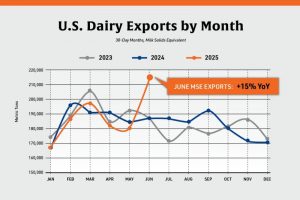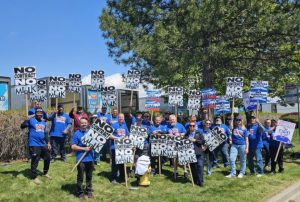
It’s been a wet winter and paddocks are pugged. Supplementary fodder has been wasted – trampled into the ground – and the mess, let’s just not go there.
If only you had a way to remove your herd from paddocks, it would allow the feed to grow – perhaps get a wedge of feed before calving? It would also reduce the need for resowing.
Alternatively, the memory of high irrigation water prices and expensive bought-in feed still haunts you. What if you could make more feed yourself?
Sure, the cost of irrigating crops and pasture has come down in recent years, but at the back of your mind there’s constant niggling about what could come.
Water politics hasn’t disappeared and, as a business operator, you prefer to have control over your largest cost- feed.
What about shade and shelter? Sometimes weather conditions are so harsh that trees just don’t cut it when it comes to protection, especially for high production cows and those which have the genetic potential to make more milk – or those which calve year-round.
All these reasons are valid motivations for considering a dairy barn, but this isn’t always enough to justify the investment, according to some industry experts.
Agriculture Victoria’s Dairy and Livestock Development Specialist Scott McDonald said building a barn wouldn’t necessarily be a solution for all dairy farmers and all on-farm issues.
“If you’re worried about feed wastage, consider a feed pad or some feed troughs, that’s not a trigger to build housing,” he said.
“If you’re worried about how to manage the herd, it’s important you consider a range of potential options. It’s about understanding all the farm needs into the future and matching them with appropriate infrastructure.”
Mr McDonald has become a specialist in intensive dairy farming operations, having co-authored Victoria’s effluent management guidelines, and various dairy feed pad publications. He’s currently co-authoring Australia’s first national Dairy Feedpads and Contained Housing Guidelines with Australian and United States subject matter experts.

These guidelines, in partnership with Dairy Australia, will be released later this year.
In recent years, Mr McDonald has worked with individual dairy farmers to assist them with their transitions to intensive farm businesses, developing freestalls, bedding pack barns and dry lots, making sure they have the finer planning and regulation details correct.
US barn design and master planning consultant Jake Martin, JGM Dairy Design Engineers, told a recent Barn Webinar – hosted by animal housing, feeding and management business Eagle Direct – that success in any dairy farming system was determined by management.
“You can spend as much money as you want on a farm, but if you can’t manage it properly its’s going to fail,” he said.
“Barns will solve some of these problems – hot weather, rough winter – but it will create others. The net positive? Only you can figure that out.”
Mr Martin, who’s worked with numerous Australian dairy farmers to convert their operations across to total mixed ration (TMR) housed farming systems, also said farmers who invest in barns must be willing to adopt a different farming philosophy.
He told the Eagle Direct Barn Webinar farmers must consider if they have a problem a barn can handle. “The first step of problem solving is problem definition,” he said.
A barn sounds interesting, what should I expect?
“Upgrading cow housing, you are going from a sleeping bag in the middle of nowhere to the Hyatt Regency at a significant cost per cow,” Mr Martin said.
“[The cow] better have a damn good way of paying her own freight.”
This was his way of telling farmers that once cows are moved into a housed system, they must deliver to assist the return on investment through increased milk production, higher fertility rates or feed efficiency.

Seven hundred cows spread across two sides of an impressive 13,000 square metre Entegra Ridgeback™ barn. Picture: Supplied
Mr Martin stressed though that no-one could promise 40 per cent more milk production from housing cows.
Those changing to housing cows should expect to concentrate on getting the most out of their dairy barn investment – and that means maximising the time the cows are inside.
Mr Martin said the traditional Australian and New Zealand practice of milking an entire herd at once, with some cows waiting in the dairy yard for hours, had to go.
“You want to maximise milk production, you’ve spent a lot of money on the barn, they need to be in there as long as possible,” he said.
“Match the (dairy) milking (speed) to the group size that you bring in for milking. If you are milking 300 cows an hour, your groups need to be 300 cows.”
A housed-cow, TMR system also requires increased mechanisation. From a machine to push feed-up for the cows, to a mixer wagon or equipment to refill freestall beds or prepare the floor in a compost or bedded pack barn.
Some of these machine’s tie-up a tractor too, Mr Martin advised.
Housing cows also means dealing with more manure. Mr Martin said only 10 to 12 per cent of the manure from a grazing herd, without access to a feed pad, is collected.
All the manure – 100 per cent – is collect when the operation moves to a freestall barn. In addition, the manure amount generally increases as a reflection of the herd’s increased feed intake.
Manure can be dried-out and used as bedding, an alternative to sand. Mr Martin said all dairy farms moving to house cows must be prepared for a huge bedding requirement.
For example, he said an empty 600 cow freestall would initially require 800 tonnes of sand and then another 200 tonnes per side (per 300 cows) of recycled sand each month for bedding maintenance.
What must I consider?
The position of the barn, effluent capture and disposal, cow bedding, electricity, ventilation, possible expansion, the type of barn that suits your operation, truss heights, the machinery needed to make it run efficiently and environmental approvals.
And that’s just the tip of the iceberg.
A lot of work goes into researching, selecting a barn site and building the structure and associated infrastructure.
When it comes to selecting a site, Mr Martin advised that climate needed to be a top consideration, and working with the site – the slopes, wind direction, proximity to feed – was crucial.
A lot of this planning comes back to the quality of the research, before there’s been any official movements towards building a barn.
Mr Martin also suggested to ‘future proof’ the plan. “There are three sure things, death, taxes and dairies expand,” Mr Martin said. “Dairies always expand, no matter how big they are.”
‘Future proofing’ included the ability to expand the manure capture and storage facilities as well as building additional barns, if required.
Mr Martin said some people also had challenges with neighbours and environmental regulations, referring to the “negative connation” of cows in barns.
This was something that needed addressing at the beginning and he recommended seeking professional advice.
Agriculture Victoria’s Mr McDonald assists farmers through the early stages of intensive dairy farm development by providing up-front technical support and assistance to navigate the planning process.
“Five years ago, if you had rung-up and said you’d wanted a dairy barn we’d have said it could take two years because they were virtually unheard of,” he said.
“Now there are a lot more and we know farmers can do it in six to 12 months depending on complexities of the farm and development site.”
What industry help is out there?
Agriculture Victoria has recently launched an interactive digital planning platform called Navigating Farm Developments (NFD) to help farmers better understand their property from a planning perspective, by identifying the relevant property overlays that may trigger permits.
In 2019, Dairy Australia developed a three-year program called Adapting Dairy Farm Systems, designed to support the growing Australian dairy barn and housed-cow movement.
Previously, most farmers turned to the US for guidance – especially when it came to building a barn.
Dairy Australia’s Technical Lead – Feeding and Farm Systems, Karen Romano, said the Adapting Dairy Farm Systems program aimed to provide dairy farmers with information and resources to support them to make informed decisions when considering new feeding and housing systems.
The program will deliver new economic and risk analysis of both partial and TMR feeding systems using on-farm data, and an in-depth risk assessment using a case study farm.
The Victorian component of the project was co-funded by Dairy Australia and Agriculture Victoria, with the New South Wales component part of ‘Dairy Unlocking Potential (‘UP’)’ – a large collaborative New South Wales-based dairy research, development and extension program led by Sydney University’s Dairy Research Foundation.
The economic and risk analysis project findings are expected to be released later this year.
What’s the current barn situation in Australia?
This isn’t clear-cut. Industry statistics don’t necessarily separate TMR operations from housed-cow farms and it’s an area of the industry constantly evolving.
Entegra Signature Structures, a Swan Hill, Victoria business, has been at the forefront of the growing popularity of dairy barns in Australia.
Entegra design consultant Charles McCalman said there was a sharp spike in interest in dairy barns following the highly publicised opening of the first Ridgeback™ in south west Victoria, and other barns in northern Victoria.
This “spike” has become a stream of dairy projects spanning many Australian states.
“Each of the past three years there have been more dairy barns installed, ” Mr McCalman said. “If we look at our pipeline of projects for the remainder of this financial year, we can expect we’ll install at least three times as many as last year – which was already a record year.”
Agriculture Victoria’s Mr McDonald believes there are at least 120 housed-cow facilities in Australia.
These are the ones he has worked with and knows of, with the bulk in northern Victoria and the NSW southern Riverina.
Of all the farms he’s assisted with, Mr McDonald said 60 per cent chose to build barns – where cows can loaf – 27 per cent opted for a freestall configuration and 13 per cent chose dairy dry lots with cattle shelters.
“It is very much an individual business decision choosing the infrastructure best suited to their situation,” he said.
Of those who invested in a freestall system, most milked 1000 to 1999 cows. The second largest group of farmers who invested in a freestall system milked 2000 to 4000 cows, according to Agriculture Victoria statistics, while those choosing a barn where cows can loaf, typically house between 250 to 800 cows.

I’m not sure a barn is for me now, but how do I keep my options open?
US dairy barn expert Jake Martin pushed the importance of research when he spoke to farmers and industry representatives and consultants at the recent Eagle Direct Barn Webinar.
“Visit as many successful dairy farms as you can,” he said.
Gathering information and understanding the system, process and management changes required to convert to a housed-cow dairy operation is the best way for farmers to decide if a barn is the correct infrastructure choice for their business.
For those looking to install a feedpad, Mr Martin said to build east to west, not north to south.
The reason? For a dairy barn to be successful, a lot of it comes down to its orientation. They must be east to west for ventilation and natural light, just to name a few drivers.
If you want to put a freestall barn on top of a feed pad, build the feedpad with the shed in mind, Mr Martin said.
Like all farming though, each business is different. The key to deciding if permanent dairy housing is the ideal investment for a business, comes back to understanding the current farming system, its limitations, opportunities, and the farm’s financial position.
“Everyone has their own numbers,” Mr Martin said. “Work with your bankers and be comfortable with what barns can do for you.”
Making sense of cow housing
- Freestall: These can be open-air, partially, or fully enclosed structures in which dairy cattle are housed and provided with feed and water. They can be used to house dairy cattle long term and include a bedding area for cattle to lie down, and possibly a loafing area for cattle to stand. The term ‘freestall’ refers to the bedding area where cattle are allocated specific cubicles (stalls), which they may enter to lie down. Feed and cow alleys, and bedding areas are cleaned regularly, usually daily, to maintain cow comfort and health.
- Loose bedding barn: Generally known as a compost barn and similar in many respects to a freestall. The key difference is that the stalls and stall alleys are replaced with a bedded pack that is aerated at least twice a day and allow cows to roam freely and loaf within the facility. The bedded pack consists of a mixture of solid manure and adsorbent organic bedding.
- Dairy dry lot: An open, well-drained area with an earthen surface and a shade structure over part of the area, to protect animals from the sun and rain. These systems are most applicable in hot, arid climates with suitable soils that facilitate drainage. Earthen pens have easy access to a centralised permanent feedpad which is flushed daily.
